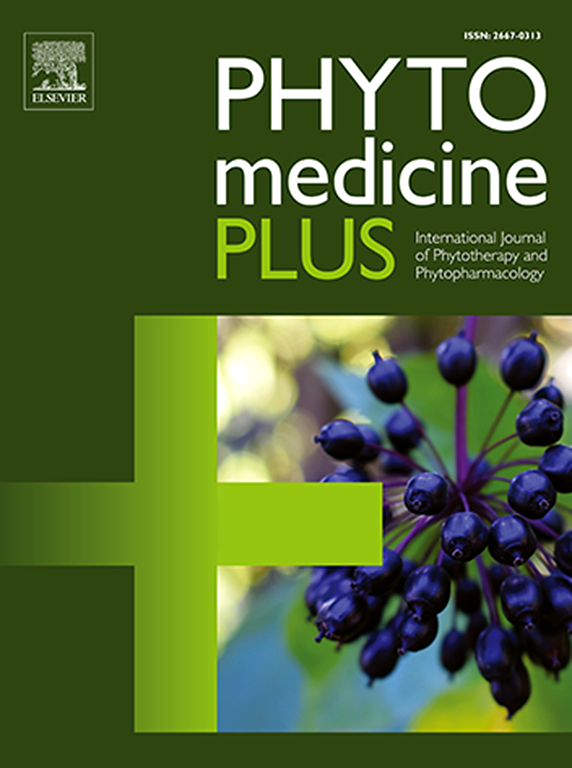Molecular investigation on active compounds in papaya leaves (Carica papaya Linn) as anti-malaria using network pharmacology, molecular docking, clustering-based analysis and molecular dynamics simulation
Q3 Pharmacology, Toxicology and Pharmaceutics
引用次数: 0
Abstract
Malaria remains a significant global health issue. In Indonesia, >400,000 cases of malaria were reported, with the highest prevalence in Papua Province. However, limited access to healthcare services in remote areas and the emergence of resistance to antimalarial drugs pose significant challenges to malaria elimination efforts in Indonesia. Hence, we investigate the active compounds in Carica papaya Linn as potential drugs against malaria using pharmacology combined with several in silico methods. A total of 23 proteins linked to the active compounds and malaria-related targets in human proteins were identified using network analysis. STAT3 protein is the first-degree rank based on network topological analysis, indicating it has a strong correlation with malaria infection. Furthermore, molecular docking was performed on the parasite protein Falcipain-2, revealing that five compounds exhibited higher binding affinities than Artemisinin (control), suggesting their potential as Falcipain-2 inhibitor. The stability of these complexes was further validated using MD simulations, showing no signs of instability in any of the models based on validation metrics. Citroxanthin (model 2) emerged as the most stable complex due to its favorable binding energy score. To confirm Citroxanthin's binding site, re-docking simulations and k-means clustering analysis were conducted. The results indicated that Citroxanthin in cluster 1 occupied a similar binding site as in the initial docking and MD simulation. From the viewpoints of the molecular investigations, including binding site analysis, binding energy, and structural dynamics, Citroxanthin may become a promising drug for treating malaria infections.
应用网络药理学、分子对接、聚类分析和分子动力学模拟等方法研究木瓜叶抗疟疾活性物质
疟疾仍然是一个重大的全球健康问题。在印度尼西亚,报告了40万疟疾病例,其中巴布亚省的流行率最高。然而,偏远地区获得医疗保健服务的机会有限,以及抗疟疾药物耐药性的出现,对印度尼西亚消除疟疾的努力构成了重大挑战。因此,我们采用药理学和多种计算机方法相结合的方法来研究木瓜果实中的活性成分作为抗疟疾药物的潜力。利用网络分析,共鉴定出23种与活性化合物和人类蛋白质中疟疾相关靶点相连的蛋白质。基于网络拓扑分析,STAT3蛋白为一级秩,表明其与疟疾感染有较强的相关性。此外,对疟原虫蛋白falcipin -2进行分子对接,发现5个化合物的结合亲和力高于对照青蒿素,提示它们可能是falcipin -2抑制剂。通过MD模拟进一步验证了这些配合物的稳定性,根据验证指标,在任何模型中都没有显示不稳定的迹象。由于其良好的结合能评分,Citroxanthin(模型2)成为最稳定的配合物。为了确认Citroxanthin的结合位点,我们进行了重新对接模拟和k-means聚类分析。结果表明,簇1中的Citroxanthin占据了与初始对接和MD模拟相似的结合位点。从结合位点分析、结合能和结构动力学等方面的分子研究来看,柠檬黄质有望成为治疗疟疾感染的有前景的药物。
本文章由计算机程序翻译,如有差异,请以英文原文为准。
求助全文
约1分钟内获得全文
求助全文
来源期刊

Phytomedicine Plus
Medicine-Complementary and Alternative Medicine
CiteScore
3.70
自引率
0.00%
发文量
178
审稿时长
81 days
期刊介绍:
 求助内容:
求助内容: 应助结果提醒方式:
应助结果提醒方式:


